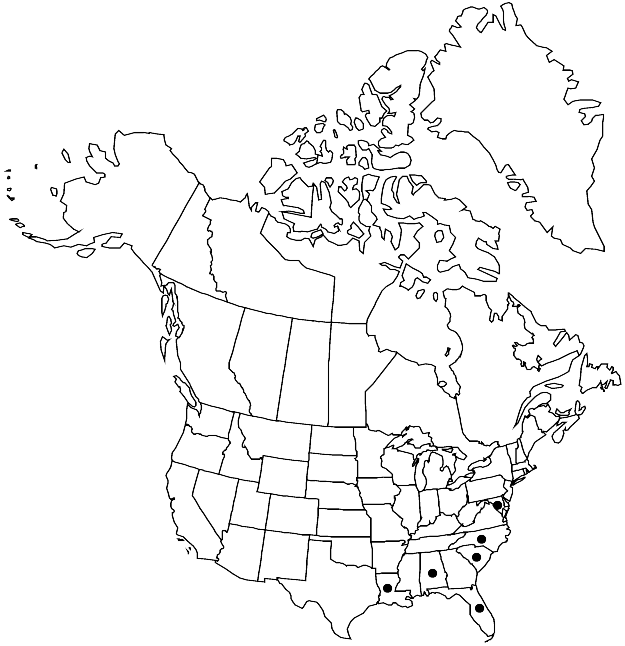Taxiphyllum alternans
J. Hattori Bot. Lab. 26: 67. 1963.
Plants in thin mats, light to yellowish green or yellowish-brown. Stems 6 cm, 3–5 mm wide, complanate-foliate; sometimes radiculose ventrally. Leaves spreading, distant, becoming close and loosely imbricate at stem apices, ovate to broadly ovatelanceolate, symmetric or asymmetric, somewhat concave or flat, 1.5–3.5 × 0.8–1.6 mm; margins plane or rarely narrowly recurved just beyond base, serrulate to entire; apex acuminate to filiform-acuminate, frequently twisted; costa double, short, one branch often 1/3–1/2 leaf length, rarely ecostate; alar cells few, quadrate to long-rectangular, 14–43 × 14–20 µm, in 1–3+ rows, 2–5 cells in marginal row; laminal cells smooth; medial cells 84–156 × 9–12 µm. Sporophytes unknown.
Habitat: Soil, humus, exposed tree roots, rotten wood, logs in swamps, calcareous boulders beside streams and waterfalls
Elevation: low to moderate elevations (0-500 m)
Distribution

Ala., Fla., La., Md., N.C., S.C., Asia
Discussion
Taxiphyllum alternans is rare in North America. The species is recognized by leaves that are distant, ovate to broadly ovate-lanceolate with acuminate to filiform-acuminate, frequently twisted apices, plane margins, and 2–5 quadrate to short-rectangular cells in marginal rows. The species occurs in a few localities in the southeastern United States with disjunct occurrences in Maryland (Charles and Montgomery counties). This species has sometimes been confused with Plagiothecium cavifolium (Bridel) Z. Iwatsuki, but all Taxiphyllum species differ from Plagiothecium microscopically by their nondecurrent leaves and the presence of foliose pseudoparaphyllia.
Selected References
None.